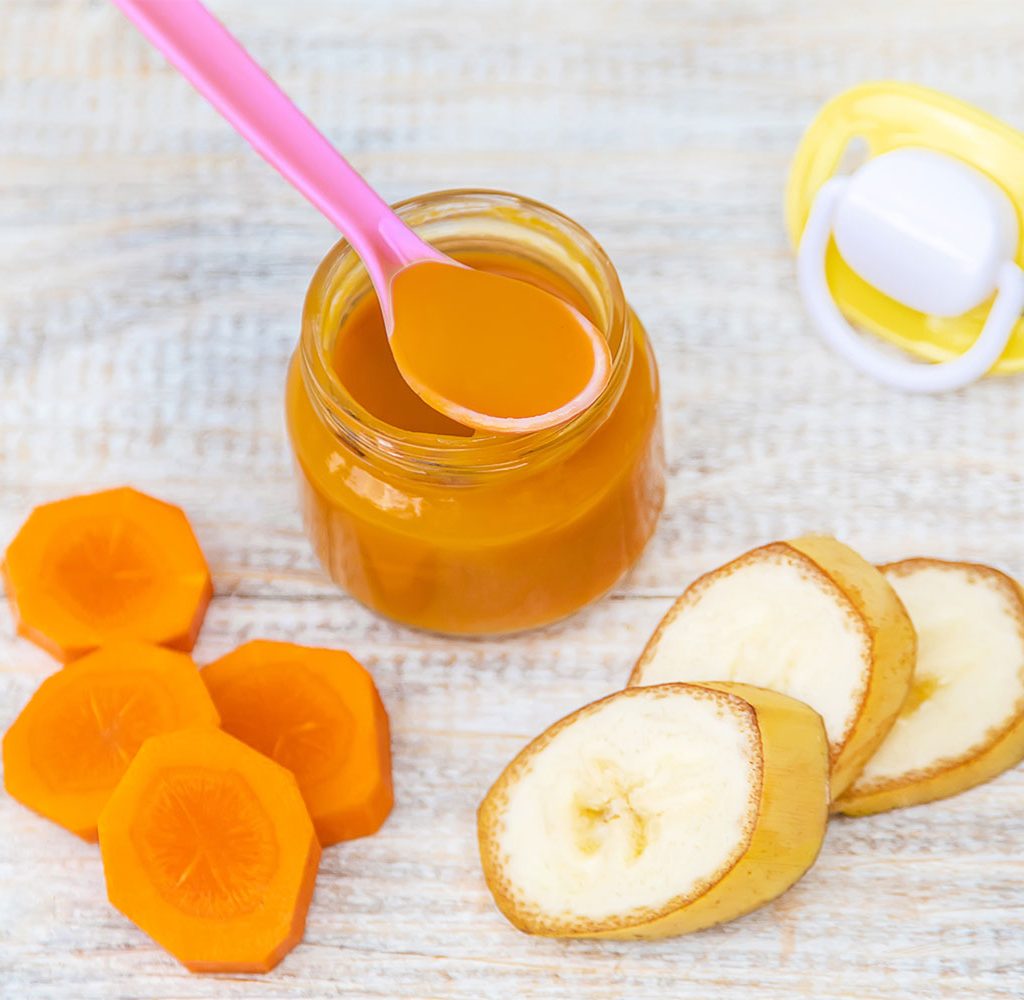While breast milk is nutritious and packed with invaluable antibodies, it may be time for your child to switch to formula or another milk substitute. Everyone is different, and you might have to try a few or a combination of some tried-and-true methods to find the best one for you and your baby. Let’s go over which techniques you might want to try at home.

Slowly mix in milk substitute with breast milk
If your little one is ready to transition away from breast milk, you can do it in increments. This helps your baby adjust to differences in tastes and textures gradually. Each week, slowly increase the amount of milk substitute mixed in with breast milk. For instance, on week one you might mix 1 ounce of formula with 7 ounces of breast milk. The following week, increase the formula to 2 ounces and reduce breast milk to 6, and so on.
If you’re pressed for time, you can try this method in the span of a week. Instead of waiting every week to increase the formula to breast milk ratio, change it up every day. The best formula to transition from breast milk depends on each child. The most common types are soy-based formulas, dairy-based formulas, and protein hydrolysate formulas. The latter is the best option for babies who might be sensitive to both soy and dairy.
Offer breast milk and milk substitute at different times
For this method, offer a whole bottle of breast milk and a whole bottle of breast milk substitute at different times of the day. For example, you may give them a bottle of breast milk substitute in the morning when they wake up and a bottle of breast milk at night. Timing plays a role because children are most hungry when they wake up first thing in the morning, so they’ll be more likely to accept a bottle of formula.

They’re more likely to get used to this new taste faster than they would if you offer them breast milk in the morning and milk substitute at night when they have a smaller appetite. If they’re already starting solids or purees, offer them breast milk substitute with their meal and snacks.
Introduce more semi-solid foods
When your baby is starting purees and soft foods, this is a great time to transition them away from breast milk. Since you’re supplementing milk with fruits, veggies, and other yummy snacks, they’ll be drinking less milk anyway. You might offer them breast milk substitute at this time because they’re more open to new tastes.

They’re trying lots of different foods and during this time of big changes, weaning off of breast milk might be easier. Experts recommend delaying weaning, however, if your little one is going through potentially stressful changes like starting daycare or teething. They might be too overwhelmed with their new surroundings and tough emotions, and want breast milk for comfort. Your baby might also associate this trying time with formula or breast milk substitute and be turned off when you try again in the future.
Children could also be drinking more milk to fill up, and even mixing their breast milk with baby cereal or oatmeal can help them stay full longer. This method works if your little one is at least 4 months old, so they can properly digest what you give them.
Try the good old don’t offer, don’t refuse method
Parents and healthcare professionals usually give this advice to nursing mothers, but this equally applies to parents giving their baby a bottle of breast milk. One way to wean your baby off of breast milk is by waiting for them to ask for the bottle instead of offering it to them. When they do ask for it, indulge them.
Most infants and toddlers will let you know when they are hungry, so don’t worry about them not getting enough to eat. If they’re old enough, offer them other snacks or semi-solid food.
Transitioning away from breast milk is a milestone each baby will face anywhere from a few weeks old to a few years. Every situation is different, but there are some tested methods that work. If one method doesn’t seem to be working, try another or a mix of two or three methods. Stay persistent and show your baby that you’re there to support them during this big transition.
Want more? You might be interested in learning how to warm your baby bottle safely – so just read on further!


